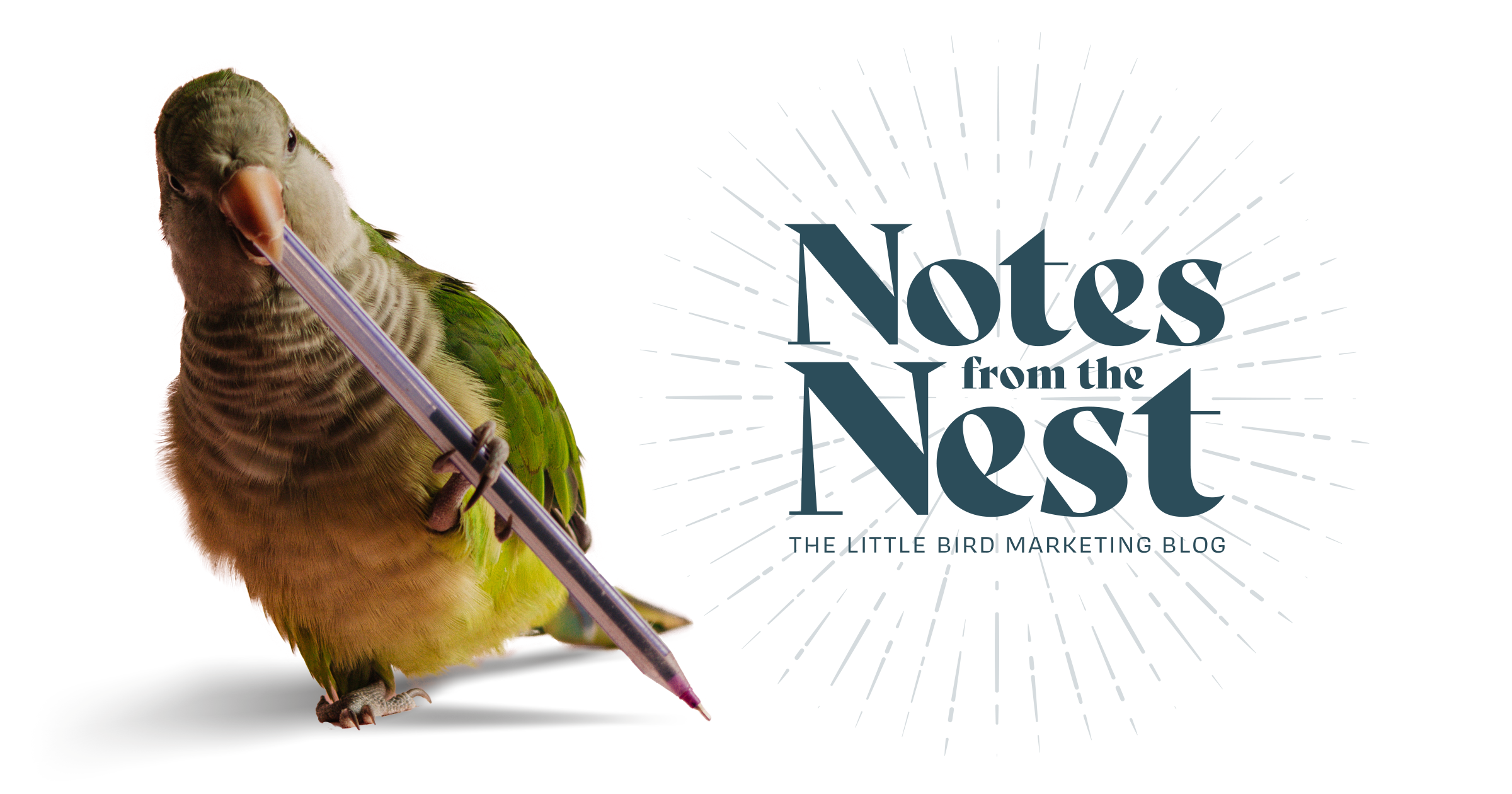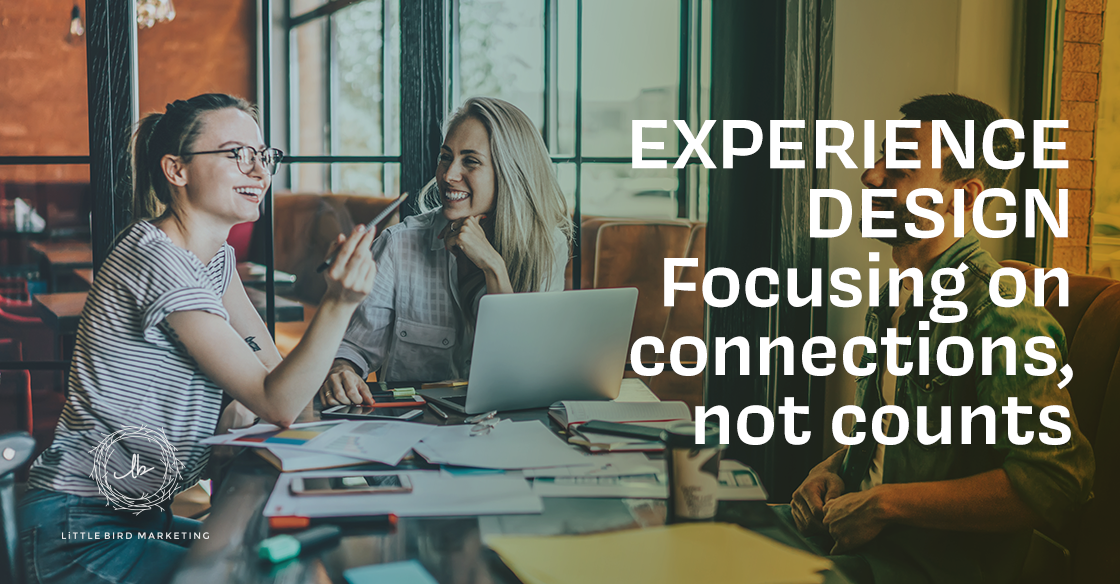guest blog by Patricia Houston, MMRLive
"When you do things right, people won't be sure you've done anything at all."
- Futurama
I live and work in this sweet spot between market research and marketing. If you come from the design world, this construct is likely familiar. It’s not new despite things like design thinking and empathy mapping having a resurgence.
I got here by practicing multiple disciplines: experiential marketing, market research, and operations. Having this mixed experience is why I started MMR LIVE… I believe that research itself needs an experience design overhaul. But what I quickly learned is that fixing one component in isolation – while important - is not enough.
Why Experience Design?
Experiences have the power to transform. This sounds very lofty, but it’s not just about big grand experience.
It’s really about the sum of many, many, micro-experiences that individually no one really notices, and getting this right leads to magic for both companies and end-users.
The Experience Gap
Since good experiences are the sum of many parts, what often ends up happening is an experience gap. The social media effect really has amplified this where our expectations are set extremely high, but are too often met with disappointing realities.
For example, we’ve all experienced the difference between a mouthwatering food advertisement versus the real thing that flops in hand. We've all walked into a luxurious hotel lobby only to check into a room that hasn’t been updated in years. Every company, every person wants to only show the best version of themselves, and the point here is that you need to be mindful when creating stories.
We need to mindful in our marketing and advertising. When creating promotional materials, building new personas, or adding testimonials to the website, don't forget to set plans in motion to "walk-the-talk" of the image your are creating in the digital space.
The Experience Mindset
This is where it gets difficult. No one person or department can own experience, everyone has to buy in.
Experience design does not equal design of experiences; it’s not a singular act or project. It’s theater, it’s orchestrating many different teams, processes, and channels to work in harmony.
This is the problem I ran into when just trying to fix the experience of feedback alone. It was too siloed. And not to mention, orchestrating experiences requires people to change. And that is HARD.
Despite all the challenges, the glue that holds exceptional experiences together is proactive, clear, and repeated communication, and what better department or individuals to drive this change at than marketers!
Here are some ways you can begin communicating and driving change within your organization today:
1. Adopt Experience Design as Your Mindset
We are all designers…we all orchestrate experiences. You do not need an art degree, or a CX certification to be an experience designer.
Come with me in believing that you are all hosts…every brand, every company, every organization is a host. Be mindful that you are inviting yourself into someone’s attention and their time.
2. Living in the "Beyond Advertising" Era
Accept as your new reality that EVERYTHING you do communicates.
As marketers what actually “markets” your company is much bigger than you or your department. It’s literally every action anyone in your company takes. Good experiences are everyone’s responsibility.
3. Design Focused Organizations will Prevail
Design is defined as: to create, fashion, execute, or construct according to plan.
Think Disney, think Apple. Know that history has shown that design focused organizations will prevail. And design can mean experience, service, or product design. Companies that focus on building strong experiences both internally and externally will win.
Learn How to Win With These 8 Experience Design Principles
1: MISE EN PLACE
Mise en place is a French phrase meaning “everything in its place.”
Life is just better when we know where to put things and where to find things. It lessens the cognitive load and the number of decisions we have to make in real-time. This is definitely a big one for onboarding and training.
2: BASIC NEEDS
Once you’ve figured out where to put everything, you need to make sure people know where to find it.
Communicate where to access all basic needs including food, drinks, Wi-Fi, charging stations and restrooms. Every one of these needs doesn’t have to be free, but be clear about the details of their availability. And remember that your basic needs are not representative of your audience’s basic needs – for example, take into account nursing moms.
3: ANTICIPATE CONTEXT & PROBLEMS
What will your audience be doing surrounding your engagement? How can you help them bridge the gap and plan for the transition into your environment and onto their next one?
As part of the planning process, think through what can go wrong. There’s a crisis planning component to this (that’s another blog!), but thinking through the "what-ifs" means you aren’t left scrambling on the fly.
4: ALL SENSES
Experiences are different for everyone. Sensory integration can have a significant impact — positive or negative — on guests. Sunlight, noise, textures, smells.
Anyone who has been to the headquarters of The Coca-Cola Company in Atlanta is likely familiar with the “flip-disk wall.”
A colleague was on the planning committee when they installed the wall as part of a revamped guest experience. She suggested doing sound testing, prompting some dirty looks and expected delays.
The demo was loud on a small scale, and she knew it would be deafening on a large scale. She was right. With the size of it, they had to redesign the wall to make it quieter...and an enjoyable addition.
5: PROVIDE VALUE
Audiences today want value, but evaluating how to add it requires weighing “garbage versus garnish.”
Take swag, for example. Putting a logo on it makes it clear what’s in it for you and it makes it transactional. Think of the Latin term cui bono, “who benefits?” Do not try to mask your agenda. Your audience will always see through it eventually, if not immediately.
6: FEEDBACK LOOP
How often are you collecting feedback? Regularly collecting client feedback and employee feedback (outside of performance review) and using that as research is a great way to improve. Design feedback in a way that is easy for them, not for you, and make sure you act on the results.
7: RESPECT ATTENTION
Don’t overcharge or over-engage captive audiences. Be mindful of what you ask in terms of dollars, time, or attention. Attention is the currency that matters most. Treat it with care if you want more because it’s easy to lose. Do it right and customers will reward you.
8: SHIFT THE BURDEN
This principle can often be the hardest one to live by because organizations are often at the mercy of system or processes that were put in place only to meet internal needs. And it’s typically what we default to because it's what’s easy for us.
This one especially applies to feedback experience. Don’t let the internal constraints or processes be your only guide. Instead of accepting your current constraints as reality, work to “shift the burden.” When in doubt, pick or build the option that “shifts the burden” to you and removes it from your guests.
Putting it Together
We are all designers… we all orchestrate experiences.
Break silos, be the champion for change, and be patient. At the B2B level, accounting for the fact that everything communicates is difficult.
"We’ve always done it that way," you may hear people say! Well, you are going to have to drag them along because this isn’t something you can just budget for and outsource. You have to plan, communicate, and build a contingency. This investment, though difficult, is always worth the return for both you and your audience.
Ready to try it? Imagine an experience you are in charge of at your company, or have participated in. Perhaps it’s a client event, a conference you host, or the employee onboarding process. Grab a cup of coffee and sit down with your team. Review each principle against your selected experience and let the ✨magic✨ happen.
Click the button below to download the Experience Design Principle Worksheet for free!
About the Author
This guest blog was written by Tricia Houston, good friend of Little Bird Marketing and CEO of MMR LIVE.
Learn more about Patricia and Experience Design here!
Or in this episode of Ponderings from the Perch, where Tricia and Priscilla discuss how experiences between businesses and customers can be consciously designed toward excellence.







Let Us Know What You Thought about this Post.
Put your Comment Below.